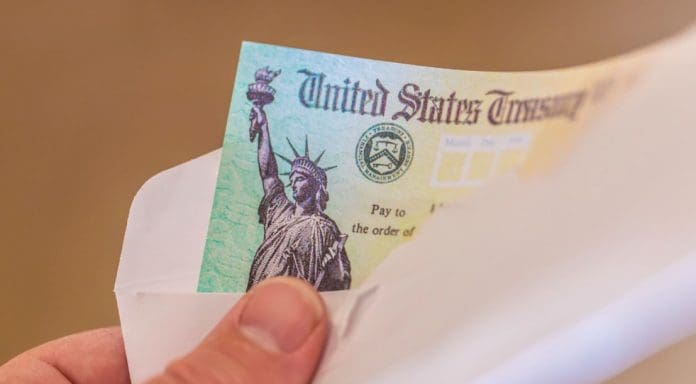Sustained emergency stimulus check programs that began right after the pandemic crossed into America helped cushion the impact of the pandemic.
It staved off starvation and homelessness among low and moderate-income workers and helped businesses stay solvent. It lifted the economy and prepared ground for a smooth transition to a normal economic situation once the nation opened up wholly after the pandemic.
Millions of Americans found themselves suddenly staring at the homeless, and struggling to put food on the table. People who lived paycheck-to-paycheck suddenly found that they were without a source of income with no prospect of any immediate alternate source of income.
This crisis was unlike any other because the whole nation had gone into shutdown and people did not have the option to look for a job in any other sector once they lost their present job. Businesses that managed to remain afloat also had to lay off workers or cut down on employable hours.
The federal administration stepped in immediately with the twin purpose of sending out immediate relief to the affected millions and also stopping people from venturing out of their homes during the pandemic in search of jobs.
Along with the three rounds of stimulus checks, there were a host of other measures including the $600 per week extra unemployment benefits that allowed 10s of millions of laid-off workers to pay their rent and buy essentials right till September 5, 2021. Over 30 million American workers benefitted from the money since the crisis began.
The expanded Child Tax Credit stimulus checks also helped families with children, sending a stimulus check up to $300 a month for six months from July to December 2021. An identical amount will be given when beneficiaries file their 2021 income tax return in 2022.
The Successive Stimulus Checks And Other Measures Mitigated The Crisis
The multi-trillion dollar federal and state support programs did not prevent bills from piling up or prevent long lines at food banks across the country. But it mitigated the damage wrought by the pandemic to a great extent. The expiration of these programs left millions in the lurch at the end of 2021 when all regular federal support measures stopped. Only those who had pending payments have continued receiving them since.
The total support covering two different administrations was massive, but it proved to be a short-term and insufficient offset to what is expected to be a long-term problem. The stimulus check staved off an immediate recession. But the excess money pumped into the economy through deficit spending put more money into the hands of Americans than the economy could sustain.
For the first time in decades, people had more money in their hands than even in normal times. Families received over $10,000 over this period and this not only helped them pay for their immediate needs and settle their debts. people had enough to save and spend on non-essential goods.
This excess money led to a demand-supply imbalance. There was more money running after too few goods as supply chain disruption had ensured a shortage of goods across the country. The war in Europe further complicated matters and by the third quarter of 2021, the nation slowly but steadily crept towards high inflation.
By 2022 the figures have shot up with each passing month even as the federal stimulus checks ran dry. The pandemic and the economic devastation it wrought was a long-term crisis and the stimulus check and allied support measures proved to be a very short-term counterbalance to it.
States Step In With Stimulus Checks And Rebates As Federal Support Runs Dry
Even the possibility that the programs were running dry or were in danger of expiring had its economic consequences. Businesses and consumers braced and tightened up for the imminent loss of federal assistance.
The solution lay for the states to reopen businesses and allow companies to bring people back into the workforce. And despite pleas from economists and Democratic legislators, further federal action was not initiated in the face of total non-cooperation from Republicans. They even refused to allow the extension of the Child Tax Credit stimulus checks beyond 2021.
Citizens are back to the difficult days of the pandemic as inflation has resulted in negative wage growth. Though there has been an increase in wages, the record inflation which reached 9.1% year-on-year in June 2022 meant that in real terms people were earning less in 2022 than before the pandemic.
California was the first off the mark initially with two rounds of stimulus checks, the Golden State stimulus check I and II. It has announced a third round recently which will send out stimulus checks of up to $1,050 to families filing jointly and with adjusted gross income below $150,000 and having at least one dependent.
Even families earning $250,000 as joint filers will receive a stimulus check from the stated though it will be pared down to $200 per filer plus another $200 for one dependent.
Maine and New Mexico were the first to go in for inflation-linked stimulus checks. While Maine sent a $1,700 stimulus check to families earning below $100,000, New Mexico split the state stimulus checks into three parts payable between June and August.
Hawaii is sending out a $300 assistance to people earning below $100,000 while those earning more will get a $100 payment.
Colorado residents will get stimulus checks amid inflation after Governor Jared Polis signed legislation to provide residents with a tax rebate. Qualifying individual filers will get a rebate of $750 while joint filers will get double that this summer. Residents who have filed their 2021 income tax returns are all set to get the payment. Filers who earn $100,000 or more will also receive a stimulus check worth $100.
Delaware is sending a $300 stimulus check to all residents who have filed their 2020 income tax returns in the state and the money has already begun hitting mailboxes. The administration has said that the relief is intended to help residents cope with high prices at pumping stations and grocery stores.
Florida is the latest to announce relief measures for its residents. A $450 stimulus check has been announced by Republican Governor Ron DeSantis to families with children. Related and non-related caregivers are also eligible for this support.






